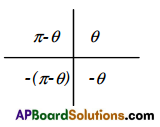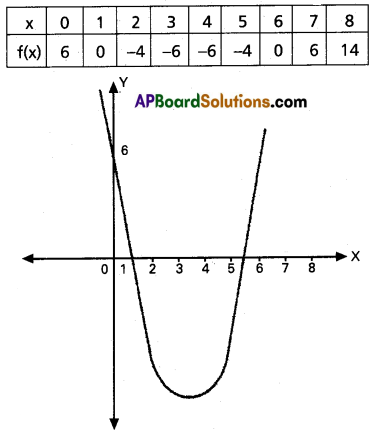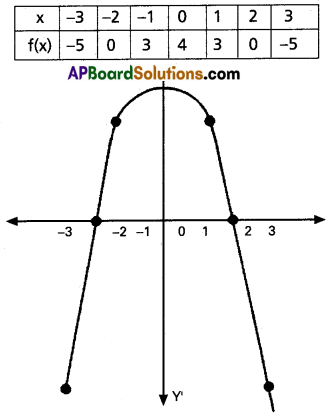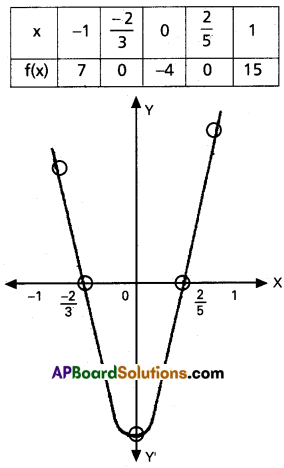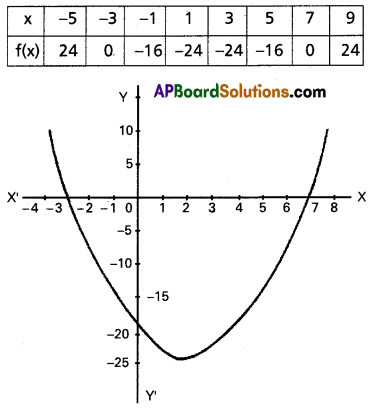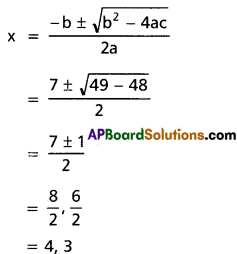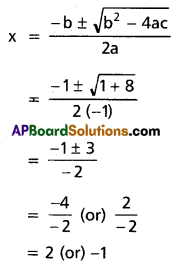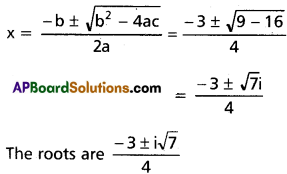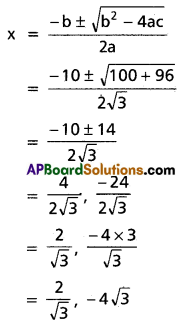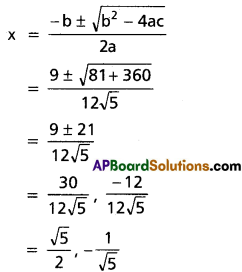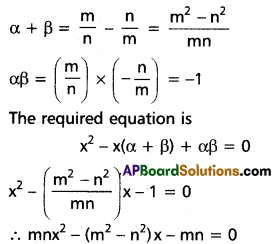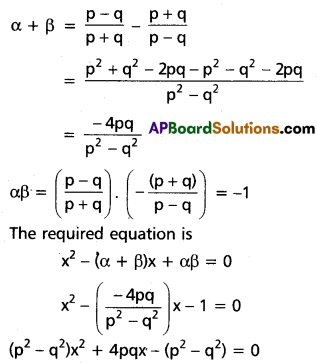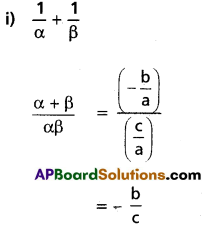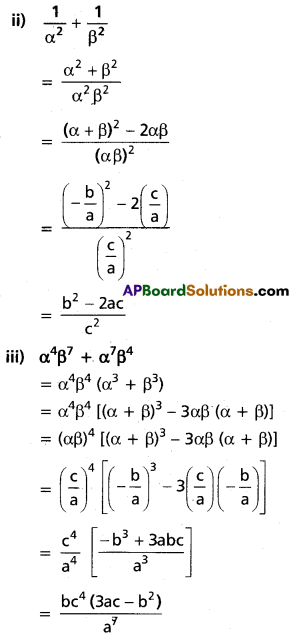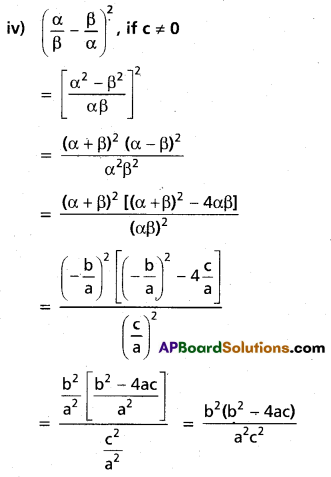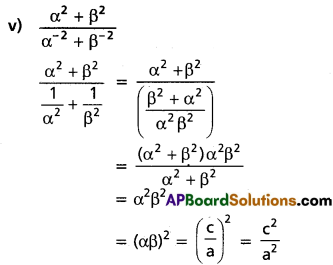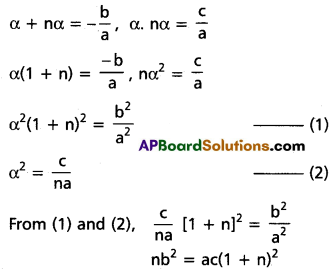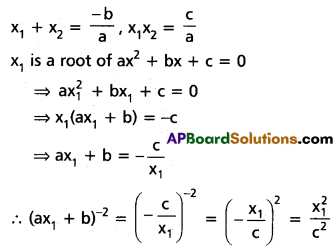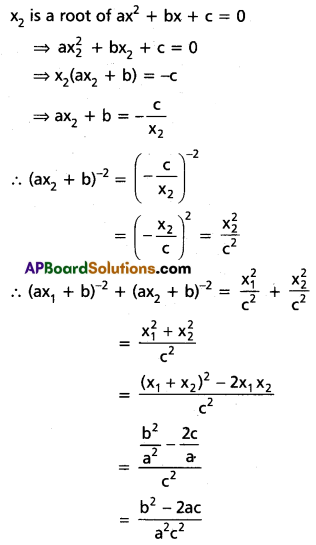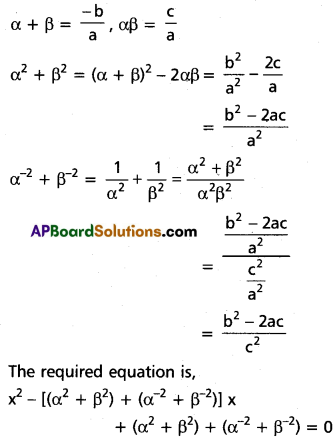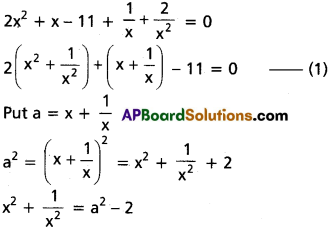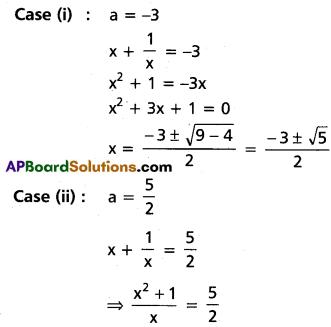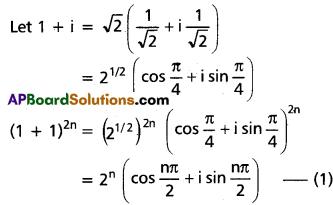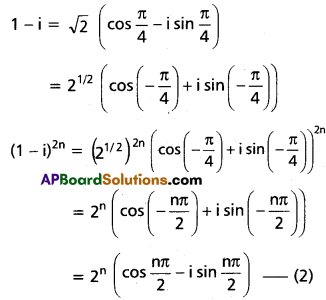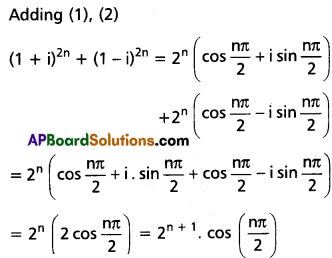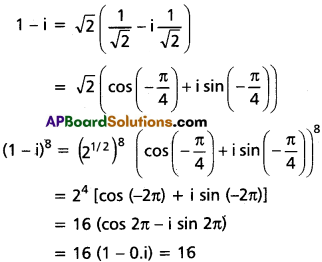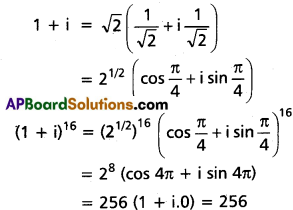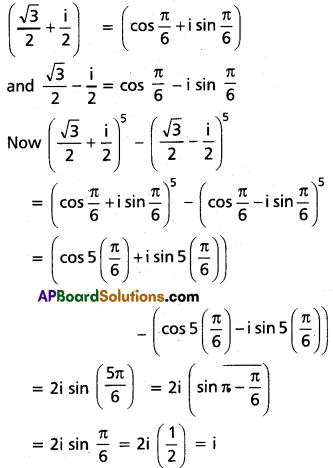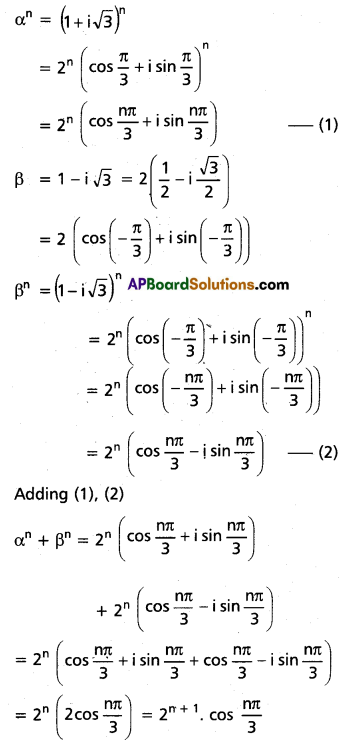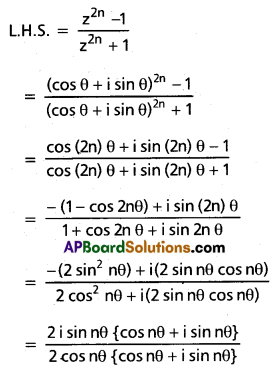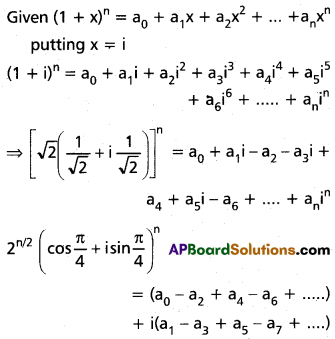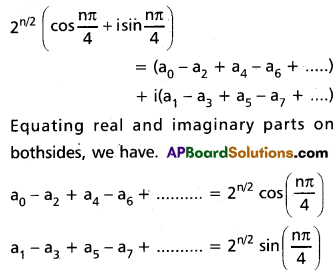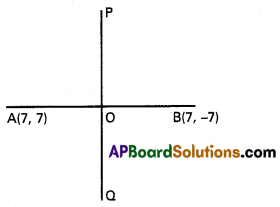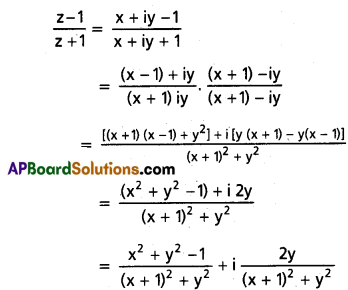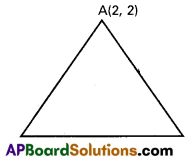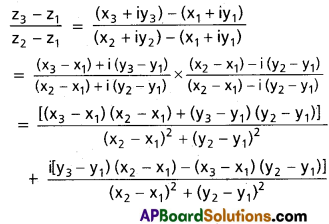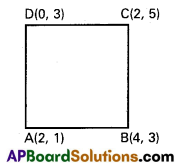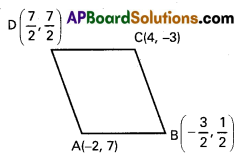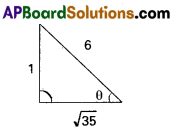Use these Inter 2nd Year Maths 2A Formulas PDF Chapter 8 Measures of Dispersion to solve questions creatively.
Intermediate 2nd Year Maths 2A Measures of Dispersion Formulas
→ The arithmetic mean of ungrouped data = \(\frac{\Sigma x_{i}}{n}\) where n is the number of observations.

→ The median of ungrouped data
First expressing the n data points in the ascending order of magnitude.
→ If n is odd then \(\frac{n+1}{2}\)the data points in the median of the given ungrouped data.
→ If n is even then the average of \(\frac{n}{2}, \frac{n+2}{2}\) the data points in the median of the given ungrouped data.
- Range,
- Mean deviation,
- Variance and,
- Standard deviation are some measures of dispusion for ungrouped and grouped data.
→ Range is defined as the difference between the maximum value and the minimum value of the series of observations.
Mean Deviation for ungrouped distribution:
→ Mean deviation about the mean = \(\frac{\text { Sum of the absolutevalues of deviationsfrom } \bar{x}}{\text { Number of Observations }} .\)
= \(\frac{\sum\left|x_{i}-\bar{x}\right|}{n}\) where x̅ is the mean
→ Mean Deviation about the median = \(\frac{\sum\left|x_{i}-{median}\right|}{n}\)
Mean Deviation for grouped data:
→ Mean Deviation about mean = \(\frac{1}{N}\) Σfi|x – x̅i|
Where N = Σfi and x̅ is the mean
→ Mean Deviation about median = \(\frac{1}{N}\) Σfi|xi – median|
When N = Σfi

→ Ungrouped data variance σ2 = \(\frac{1}{n}\) = Σ(xi – x̅)2
Standard deviation σ = \(\sqrt{\frac{1}{n} \sum\left(x_{i}-\bar{x}\right)^{2}}\)
→ Discrete frequency distribution variance σ2 = \(\frac{1}{n}\) = Σfi(xi – x̅)2 where x̅ is the mean]
Standard deviation σ = \(\frac{1}{N}\) \(\sqrt{\sum f_{i}\left(x_{i}-\bar{x}\right)^{2}}\)
→ Continuous frequency distribution standard deviation σ = \(\frac{1}{N} \sqrt{N \sum f_{i} x_{i}{ }^{2}-\left(\sum f_{i} x_{i}\right)^{2}}\)
(or) σ = \(\frac{h}{N}\) \(\sqrt{N \Sigma f_{i} y_{i}^{2}-\left(\sum f_{i} y_{i}\right)^{2}}\)
→ Co-efficient of variation = \(\frac{\sigma}{x}\) × 100 (x̅ ≠ 0)

→ If each observation in a data is. multiplied by a constant K, then the variance of the resulting observations is K2 times that or the variance of original observations.
→ If each of the observations x1, x2, ………, xn is increased by K, where K is a positive or negative number then the variance remains unchanged.
Measure of Central Tendency:
1. Mathematical Average:
a) Arithmetic mean (A.M.)
b) Geometric mean (G.M.)
c) Harmonic mean (H.M.)
2. Averages of Position:
a) Median
b) Mode
Arithmetic Mean:
(1) Simple arithmetic mean in individual series
(i) Direct method: If the series in this case be x1, x2, …………. xn then the arithmetic mean x̄ is given by
x̄ = \(\frac{\text { Sum of the series }}{\text { Number of terms }}\)
i.e x̄ = \(\frac{x_{1}+x_{2}+x_{3}+\ldots+x_{n}}{n}=\frac{1}{n} \sum_{i=1}^{n} x_{i}\)
(2) Simple arithmetic mean in continuous series If the terms of the given series be x1, x2, …………. xn and the corresponding frequencies be f1, f2, …………. fn then the arithmetic mean x̄ is given by,
x̄ = \(\frac{f_{1} x_{1}+f_{2} x_{2}+\ldots+f_{n} x_{n}}{f_{1}+f_{2}+\ldots+f_{n}}=\frac{\sum_{i=1}^{n} f_{i} x_{i}}{\sum_{i=1}^{n} f_{i}}\)
Continuous Series:
If the series is continuous then xii’s are to be replaced by mi’s where mi’s are the mid values of the class intervals.
Mean of the Composite Series:
If x̄i,(i = 1, 2, …………… k) are the means of k-component series of sizes ni(i = 1,2,….,k) respectively, then the mean x̄ of the composite series obtained on combining the component series is given by the formula x̄ = \(\frac{n_{1} \bar{x}_{1}+n_{2} \bar{x}_{2}+\ldots+n_{k} \bar{x}_{k}}{n_{1}+n_{2}+\ldots+n_{k}}=\frac{\sum_{i=1}^{n} n_{i} \bar{x}_{i}}{\sum_{i=1}^{n} n_{i}}\)
Geometric Mean:
If x1, x2, …………. xn are n values of a variate x, none of them being zero, thengeometric mean (G.M.) is given by G.M. (x1, x2, …………. xn)1/n
In case of frequency distribution, G.M. of n values x1, x2, …………. xn of a variate x occurring with frequency f1, f2, …………. fn is given by G.M = (x1f1, x2f2, …………. xnfn)1/N, where N = f1 + f2 + ……….. + fn
Continuous Series:
If the series is continuous then xjj’s are to be replaced by mii’s where mii’s are the mid values of the class intervals.
Harmonic Mean:
The harmonic mean of n items x1, x2, …………. xn is defined as H.M. = \(\frac{n}{\frac{1}{x_{1}}+\frac{1}{x_{2}}+\ldots .+\frac{1}{x_{n}}}\)
If the frequency distribution is f1, f2, …………. fn respectively, then H.M = \(\frac{f_{1}+f_{2}+f_{3}+\ldots . .+f_{n}}{\left(\frac{f_{1}}{x_{1}}+\frac{f_{2}}{x_{2}}+\ldots .+\frac{f_{n}}{x_{n}}\right)}\)

Median:
The median is the central value of the set of observations provided all the observations are arranged in the ascending or descending orders. It is generally used, when effect of extreme items is to be kept out.
(1) Calculation of median
(i) Individual series: If the data is raw, arrange in ascending or descending order. Let n be the number of observations.
If n is odd, Median = value of \(\left(\frac{n+1}{2}\right)^{t h}\) item.
If n is even, Median = \(\frac{1}{2}\)[value of \(\left(\frac{n}{2}\right)^{\text {th }}\) item + value of \(\left(\frac{n}{2}+1\right)^{\text {th }}\) item]
(ii) Discrete series: In this case, we first find the cumulative frequencies of the variables arranged in ascending or descending order and the median is given by
Median = \(\left(\frac{n+1}{2}\right)^{t h}\) observations, where n is the cumulative frequency.
(iii) For grouped or continuous distributions: In this case, following formula can be used.
(a) For series in ascending order, Median = l + \(\frac{\left(\frac{N}{2}-C\right)}{f}\) × i
Where l = Lower limit of the median class
f = Frequency of the median class
N = The sum of all frequencies
I = The width of the median class
C = The cumulative frequency of the class preceding to median class.
(b) For series in descending order
Median = u – \(\left(\frac{\frac{N}{2}-C}{f}\right)\) × i, where u = upper limit of the median class, N = \(\sum_{i=1}^{n}\)fi
As median divides a distribution into two equal parts, similarly the quartiles, quintiles, deciles and percentiles divide the distribution respectively into 4, 5, 10 and 100 equal parts. The th quartile is given by Q = l + \(\left(\frac{j \frac{N}{4}-C}{f}\right)\)i:j= 1,2,3. Q1 is the lower quartile, Q2 is the median and Q3 is called the upper quartile.
(2) Lower qualities
- Discrete series: Q1 = size of \(\left(\frac{n+1}{4}\right)^{\text {th }}\) item
- Continuous series : Q1 = l + \(\frac{\left(\frac{N}{4}-C\right)}{f}\) × i
(3) Upper qualities
- Discrete series : Q3 = size of \(\left[\frac{3(n+1)}{4}\right]^{\text {th }}\) item
- Continuous series : Q3 = l + \(\frac{\left(\frac{3N}{4}-C\right)}{f}\) × i
Mode:
The mode or model value of a distribution is that value of the variable for which the frequency is maximum. For continuous series, mode is calculated as,
Mode = l1 + \(\left[\frac{f_{1}-f_{0}}{2 f_{1}-f_{0}-f_{2}}\right]\) × i
Where, l1 = The lower limit of the model class
f1 = The frequency of the model class
f0 = The frequency of the class preceding the model class
f2 = The frequency of the class succeeding the model class
i = The size of the model class.
Empirical relation :
Mean – Mode = 3(Mean – Median) ⇒ Mode = 3 Median – 2 Mean.
Measure of dispersion:
The degree to which numerical data tend to spread about an average value is called the dispersion of the data. The four measure of dispersion are
- Range
- Mean deviation
- Standard deviation
- Square deviation
(1) Range:
It is the difference between the values of extreme items in a series. Range = Xmax – Xmin
- The coefficient of range (scatter) = \(\frac{x_{\max }-x_{\min }}{x_{\max }+x_{\min }}\)
Range is not the measure of central tendency. Range is widely used in statistical series relating to quality control in production. - Range is commonly used measures of dispersion in case of changes in interest rates, exchange rate, share prices and like statistical information. It helps us to determine changes in the qualities of the goods produced in factories.
Quartile deviation or semi inter-quartile range:
It is one-half of the difference between the third quartile and first quartile i. e., Q.D. = \(\frac{Q_{3}-Q_{1}}{2}\) and coefficient of quartile deviation = \(\frac{Q_{3}-Q_{1}}{Q_{3}+Q_{1}}\), where Q3 is the third or upper quartile and Q1 is the lowest or first quartile.

(2) Mean Deviation:
The arithmetic average of the deviations (all taking positive) from the mean, median or mode is known as mean deviation.
Mean deviation is used for calculating dispersion of the series relating to economic and social inequalities. Dispersion in the distribution of income and wealth is measured in term of mean deviation.
- Mean deviation from ungrouped data (or individual series) Mean deviation = \(\frac{\sum|x-M|}{n}\) where |x – M| means the modulus of the deviation of the variate from the mean (mean, median or mode) and n is the number of terms.
- Mean deviation from continuous series: Here first of all we find the mean from which deviation is to be taken. Then we find the deviation dM =| x -M| of each variate from the mean M so obtained.
- Next we multiply these deviations by the corresponding frequency and find the product f.dM and then the sum ΣfdM of these products.
- Lastly we use the formula, mean deviation = \(\frac{\sum f|x-M|}{n}=\frac{\sum f d M}{n}\), where n = Σf.
(3) Standard Deviation:
Standard deviation (or S.D.) is the square root of the arithmetic mean of the square of deviations of various values from their arithmetic mean and is generally denoted by aread as sigma. It is used in statistical analysis.
(i) Coefficient of standard deviation: To compare the dispersion of two frequency distributions the relative measure of standard deviation is computed which is known as coefficient of standard deviation and is given by
Coefficient of S.D. = \(\frac{\sigma}{\bar{x}}\), where x̄ is the A.M.
(ii) Standard deviation from individual series σ = \(\sqrt{\frac{\sum(x-\bar{x})^{2}}{N}}\)
where, x̄ = The arithmetic mean of series
N = The total frequency.
(iii) Standard deviation from continuous series σ = \(\sqrt{\frac{\sum f_{i}\left(x_{i}-\bar{x}\right)^{2}}{N}}\)
where, x̄ = Arithmetic mean of series
xi = Mid value of the class
fi = Frequency of the corresponding
N = Σf = The total frequency
Short cut Method:
(i) σ = \(\sqrt{\frac{\sum f d^{2}}{N}-\left(\frac{\sum f d}{N}\right)^{2}}\)
(ii) σ = \(\sqrt{\frac{\sum d^{2}}{N}-\left(\frac{\sum d}{N}\right)^{2}}\)
where, d = x – A = Deviation from the assumed mean A
f = Frequency of the item
N = Σf = Sum of frequencies
(4) Square Deviation:
(i) Root mean square deviation
S = \(\sqrt{\frac{1}{N} \sum_{i=1}^{n} f_{i}\left(x_{i}-A\right)^{2}}\)
where A is any arbitrary number and S is called mean square deviation.
(ii) Relation between S.D. and root mean square deviation : If σ be the standard deviation and S be the root mean square deviation.
Then, S2 = σ2 + d2.
Obviously, S2 will be least when d = 0 i.e., x̄ = A
Hence, mean square deviation and consequently root mean square deviation is least, if the deviations are taken from the mean.

Variance:
The square of standard deviation is called the variance. Coefficient of standard deviation and variance : The coefficient of standard deviation is the ratio of the S.D. to A.M. i.e., \(\frac{\sigma}{x}\).
Coefficient of variance = coefficient of S.D.× 100 = \(\frac{\sigma}{x}\) × 100 .
Variance of the combined series :
If n1,n2 are the sizes, x̄1, x̄2 the means and σ1, σ2 the standard deviation of two series, then σ2 = \(\frac{1}{n_{1}+n}\)[n1(σ12 + d12) + n2(σ22 + d22)]
where d1 = x̄1 – x̄, d2 = x̄2 – x̄ and x̄ = \(\frac{n_{1} \bar{x}_{1}+n_{2} \bar{x}_{2}}{n_{1}+n_{2}}\)
![]()
![]()
